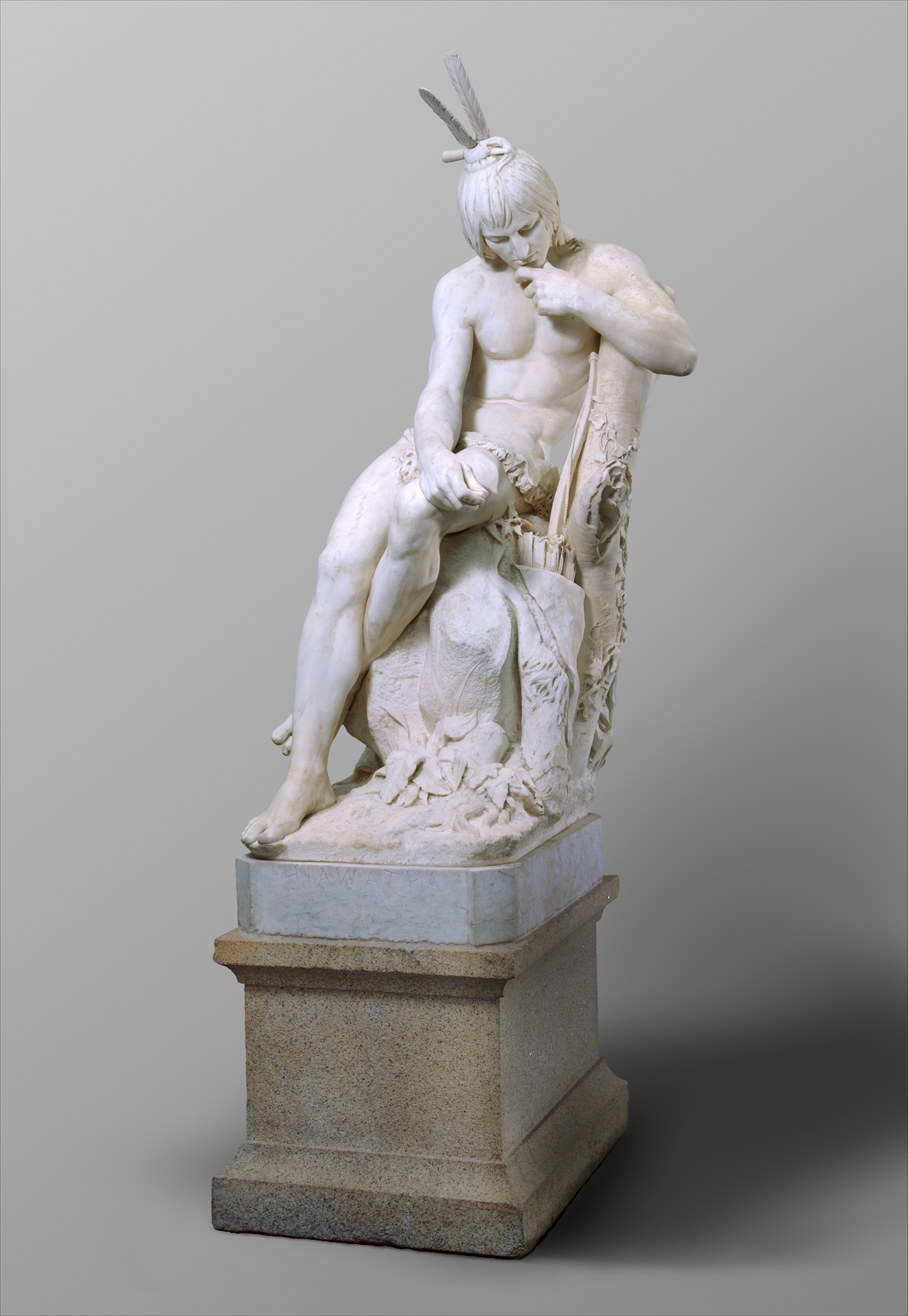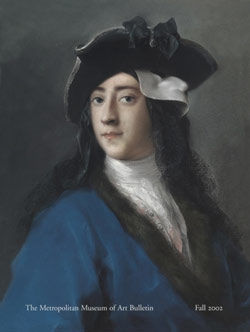Hiawatha
Augustus Saint-Gaudens American
Saint-Gaudens’s three years of study in Paris came to an abrupt end with the outbreak of the Franco-Prussian War. He left for Rome in late 1870 and soon began Hiawatha, his first full-length statue, inspired by Henry Wadsworth Longfellow’s epic poem "The Song of Hiawatha" (1855). Seated on a rock in a contemplative pose, with his quiver of arrows and bow nearby, the fictional Ojibwe chief is "pondering, musing in the forest /On the welfare of his people," as an excerpt from Longfellow’s verse inscribed on the base declares. Saint-Gaudens was one of many artists who drew thematic inspiration from the poet's "Hiawatha," reinforcing the stereotype of the "vanishing" Native American.
Read a Native Perspective on this work.
Due to rights restrictions, this image cannot be enlarged, viewed at full screen, or downloaded.
This artwork is meant to be viewed from right to left. Scroll left to view more.






![Augustus Saint-Gaudens in The Metropolitan Museum of Art [adapted from The Metropolitan Museum of Art Bulletin, v. 66, no 4 (Spring, 2009)]](/-/media/images/art/metpublication/cover/2009/augustus_saint_gaudens_in_the_metropolitan_museum_of_art.jpg)
